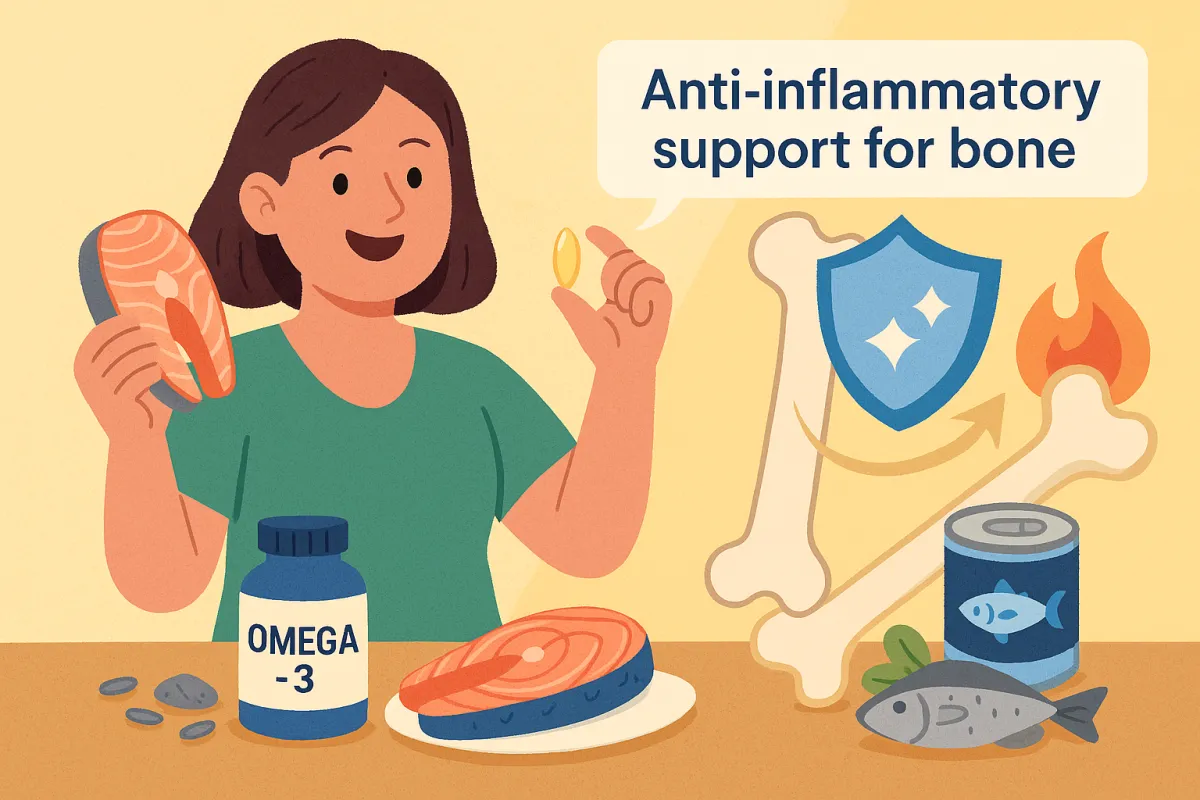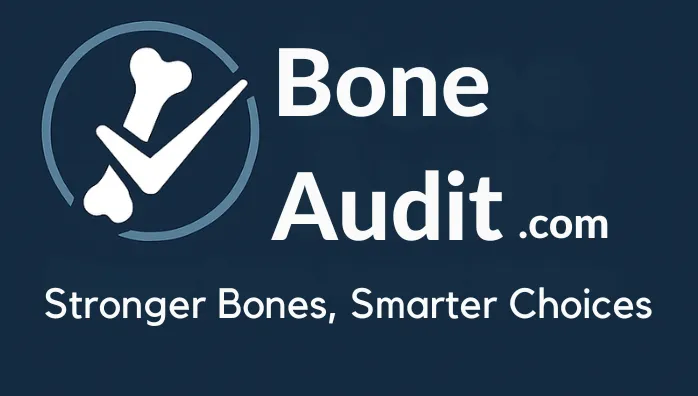
Omega-3 for Bone Health: The Anti-Inflammatory Advantage
When you think of omega-3 fats, you probably think about heart health or brain function. But research also shows that omega-3s play an important — and often underappreciated — role in protecting and building bone.
Let’s explore why these healthy fats matter more than you might think.
What Are Omega-3s?
Omega-3s are essential fatty acids — meaning your body can’t make them on its own. You have to get them through food or supplements.
There are three main types:
ALA (alpha-linolenic acid) — found in plant foods like flaxseeds and chia
EPA (eicosapentaenoic acid) — found in oily fish
DHA (docosahexaenoic acid) — also found in oily fish
Your body can convert some ALA into EPA and DHA — but that process is very inefficient, especially as we age. That’s why marine-based sources (like fish or algae oil) are the most effective for bone and overall health.
How Omega-3s Support Bone Health
Omega-3s help bones in four important ways:
Lower inflammation:
Chronic inflammation increases the activity of osteoclasts — the cells that break down bone. Omega-3s help reduce inflammatory signals like IL-6 and TNF-α, which supports healthier bone remodeling over time.Improve bone formation and calcium balance:
Omega-3s may promote osteoblast activity (bone-building cells) and enhance calcium incorporation into bone, making the matrix stronger and more resilient.Mimic some effects of osteoporosis medication — naturally:
Lab and animal studies suggest omega-3s can reduce bone resorption and osteoclast formation by acting on similar biological pathways as some bone drugs.🧪 A 2020 review in Nutrients found that omega-3s modulate osteoclasts and may work in a similar way to medications like bisphosphonates and SERMs.¹
While they don’t replace medication, they may offer a gentler, complementary strategy for supporting bone strength.Support muscle and joint health:
Strong muscles protect bones. Omega-3s have been shown to support muscle mass and reduce joint discomfort — both of which help prevent falls and fractures.
What the Research Says
🧪 A 2012 review in Current Osteoporosis Reports concluded that omega-3 intake may reduce bone loss and increase bone formation, especially when combined with calcium and vitamin D.²
🧪 Higher omega-3 levels have been linked to better hip bone density and lower risk of osteoporosis in older adults.
The research is still emerging, but results are promising — especially as part of a well-rounded bone health strategy.
How Much Do You Need?
There’s no official RDI for omega-3s specifically for bone health, but general guidelines suggest:
EPA + DHA: 250–1,000 mg per day
ALA: ~1.1 g for women, 1.6 g for men — though it’s poorly converted to the active forms
Best Sources of Omega-3s
Source Omega-3 Content (EPA + DHA unless noted)
Salmon (100g) ~2,000mg
Sardines (1 can) ~1,300 mg
Mackerel (100g) ~1,200 mg
Eggs (2) ~250 mg
Flaxseed (1 tbsp) ~2,400 mg
Chia seeds (1 tbsp) ~2,400 mg
Algae oil (1 tsp) ~400–500 mg
Note: Flax and chia are great — but to support bone health, a fish oil or algae-based supplement is usually more effective.
Should You Supplement?
If you don’t eat oily fish 2–3 times per week, a supplement is often the easiest way to meet your omega-3 needs.
Look for:
Fish oil (triglyceride form) for better absorption
Algae oil if you're vegetarian or sensitive to fish
A daily dose of 500–1,000 mg of EPA + DHA combined
Omega-3s are generally safe and well tolerated. If you’re on blood-thinning medications, talk to your doctor first.
Final Thought
Omega-3s don’t just support your heart and brain — they help your bones, too. From reducing inflammation to mimicking some of the effects of bone medications, these powerful fats offer wide-reaching benefits.
If you’re serious about your bone health, don’t overlook this quiet but essential part of the plan.
References
Poulsen RC, et al. (2020). Modulation of osteoclasts by omega-3 polyunsaturated fatty acids: A review. Nutrients, 12(9), 2569.
Kruger MC, et al. (2012). The role of omega-3 fatty acids in the prevention of bone loss. Curr Osteoporos Rep. 10(2): 108–116.
